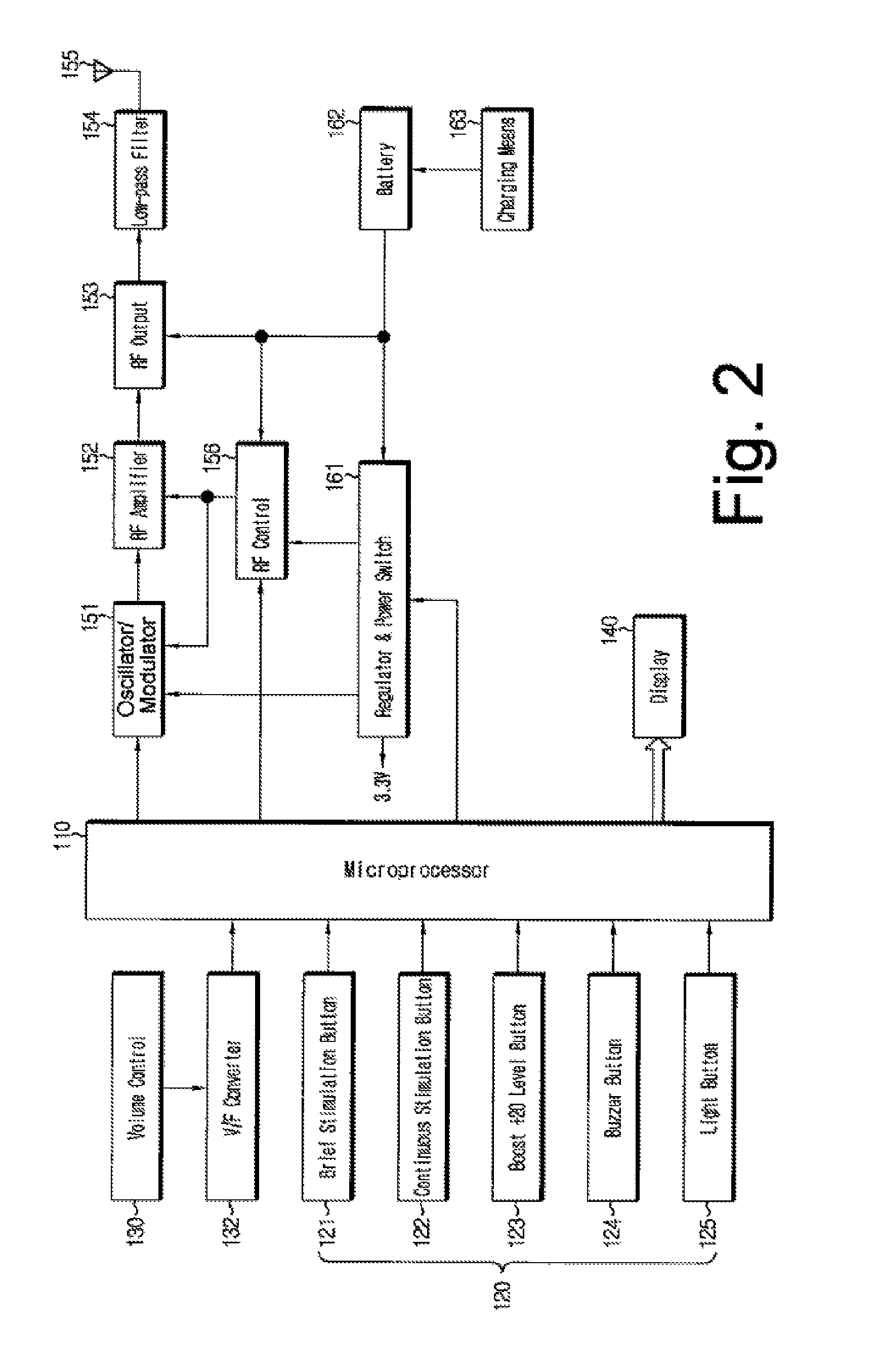Remote animal training system using voltage-to-frequency conversion
a technology of voltage-to-frequency conversion and remote training, which is applied in the field of remote training devices for animals, can solve the problems of insufficient selection of selector dials with many levels, and one level is not always the appropriate level
- Summary
- Abstract
- Description
- Claims
- Application Information
AI Technical Summary
Benefits of technology
Problems solved by technology
Method used
Image
Examples
Embodiment Construction
[0017]A remote control for animal training includes a user hand-held transmitter for transmitting coded command signals. The command signals are transmitted via a microprocessor amplified through a RF system and outputted through an antenna. The remote control further includes a training device worn by the animal to be trained. An RF receiver receives command signals with individual output levels of three different styles of stimuli to the sensory system of the animal in order to allow the animal to properly react or respond to these levels of stimuli.
[0018]A hand-held transmitter uses a voltage frequency converter (VFC) for converting input from a three-terminal potentiometer voltage to a frequency proportional thereto. The frequency signal is input to a microprocessor. The microprocessor has a security code function to limit control of the training device to that of the remote controller. Five function switches allow for the selection of one of five types of stimulation, 1) brief ...
PUM
 Login to View More
Login to View More Abstract
Description
Claims
Application Information
 Login to View More
Login to View More - R&D
- Intellectual Property
- Life Sciences
- Materials
- Tech Scout
- Unparalleled Data Quality
- Higher Quality Content
- 60% Fewer Hallucinations
Browse by: Latest US Patents, China's latest patents, Technical Efficacy Thesaurus, Application Domain, Technology Topic, Popular Technical Reports.
© 2025 PatSnap. All rights reserved.Legal|Privacy policy|Modern Slavery Act Transparency Statement|Sitemap|About US| Contact US: help@patsnap.com



